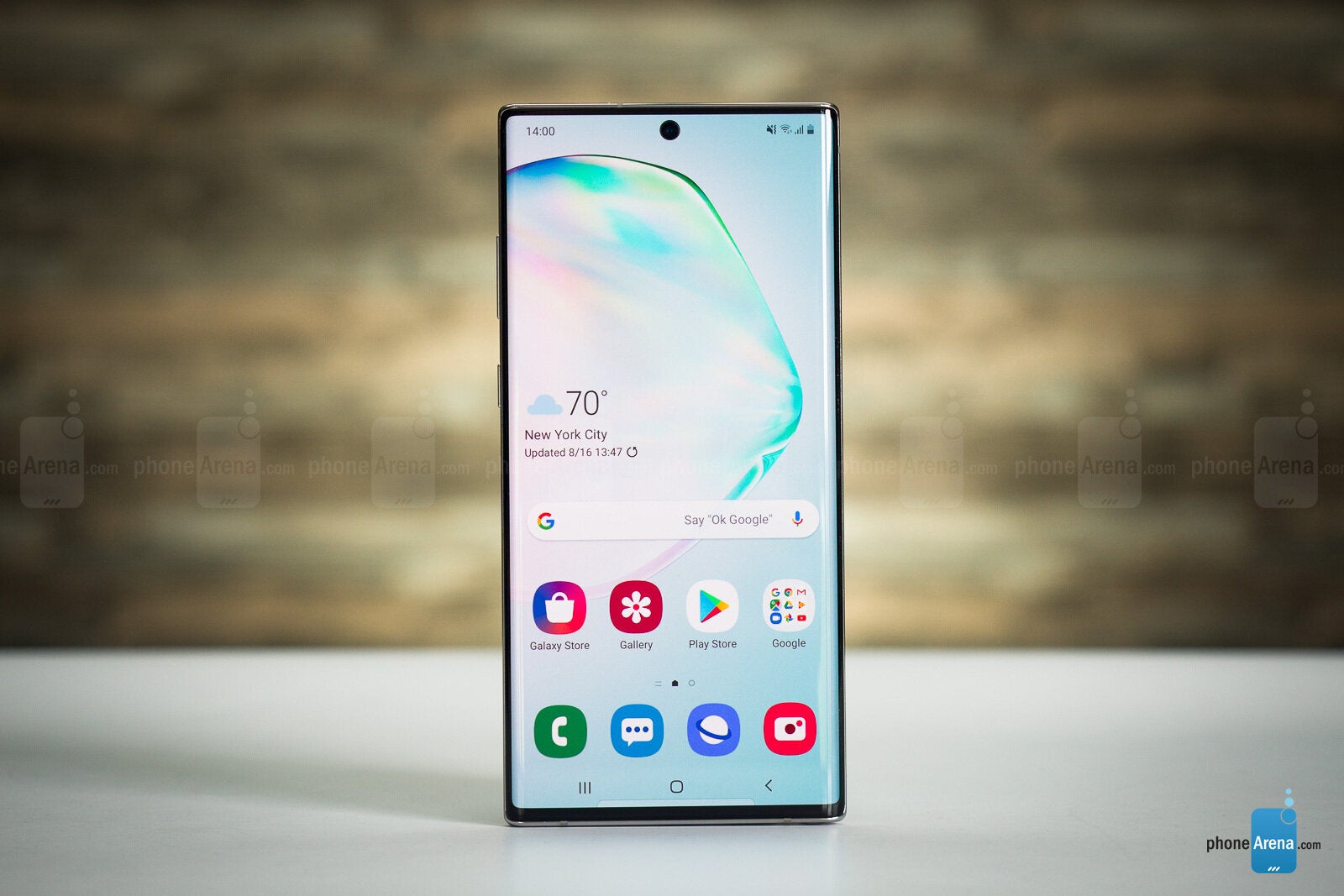Samsung will reportedly equip base Galaxy Note 20 handsets with 128GB of storage

Samsung's new flagship series, the Galaxy S20, has just started shipping. And that shifts the focus over to the company's second-half flagship, the Galaxy Note 20 line. According to SamMobile, it appears that the manufacturer is going to equip the base model of these phones with 128GB of storage. While that corresponds to the amount of storage available with the base Galaxy S20 models, it is half of the 256GB of storage that Samsung used on the base model of the Galaxy Note 10 and Galaxy Note 10+.
So how will Galaxy Note 20 users find enough storage for all of the 8K video they record and all of the photos they snap? After all, the premium model should have the same cameras and sensors as the Galaxy S20 Ultra 5G. That would mean a 108MP sensor for the primary camera that uses 9:1 pixel binning to produce sharp 12MP images with less noise. And we'd imagine that the 48MP periscope "Space Zoom" telescopic camera will also be found in the top-of-the-line Galaxy Note 20 model. Space Zoom delivers 100x hybrid zoom. There will also be a 12MP Ultra-wide camera and a ToF depth sensor. Anyone purchasing any of the Galaxy Note 20 phones will probably be taking plenty of photos and shooting many videos and 128GB of storage might not cut it.
We could see as many as three new Galaxy Note 20 models launch this year
The answer could be the use of a microSD slot for the Galaxy Note 20 line, including the smaller screened variant. Last year's Galaxy Note 10 was equipped with 256GB of storage and no microSD slot. The Galaxy Note 10+ also featured 256GB of storage in the basic configuration, but it did have a microSD slot.
We could see as many as three new Note models for 2020 including a Galaxy Note 20, Galaxy Note 20+ and the Galaxy Note 20 Ultra. Except for those units in Europe, all Galaxy Note 20 handsets will be powered by the Snapdragon 865, designed by Qualcomm and manufactured by TSMC using its 7nm process. The process number refers to the number of transistors that can be shoehorned into a dense spot; the smaller the process number, the higher the number of transistors inside the chip. This is important because more transistors inside a chip make the component more powerful and energy-efficient. In Europe, the Galaxy Note 20 line will be equipped with the Exynos 990 SoC.

The basic model of last year's Galaxy Note 10 came equipped with 256GB of storage
The Galaxy Note 20 Ultra could feature a screen weighing in at over 7-inches. The Galaxy Note 20+ might sport a 6.9-inch display with a 6.5-inch screen found on the Galaxy Note 20. A screen refresh rate of 120Hz should be available on all three models providing for buttery smooth scrolling and improved mobile game video. The Galaxy Note 20 series could offer a pair of configuration options: 12GB of memory with 128GB of storage and 16GB of memory with 512GB of storage. The top-of-the-line model could carry a 5000mAh battery.
With the 120Hz refresh rate option and 5G capabilities, users may end up disappointed with the battery life on the new Galaxy Note. One way to avoid that would be to reduce the refresh rate down to the more traditional 60Hz. That won't seem like a viable solution for many, but we are hearing that with the 120Hz refresh rate enabled on the Galaxy S20 Ultra 5G+, the 5000mAh battery is not holding out as long as hoped. However, Samsung has supposedly created an improved version of its 120Hz refresh rate and an OLED panel optimized for 5G. The screen reduces blue light to reduce eye strain and reduces power consumption.
We could see the Galaxy Note 20 series become official in August. Last year, the Galaxy Note 10 (6.3-inch, FHD+ display) and the Galaxy Note 10+ (6.8-inch, QHD+ display) were both unveiled on August 7th and released on August 23rd. It will be more important this year for Samsung to launch the Galaxy Note 20 family before the 2020 Apple iPhone 12 lineup is released. That's partly because the latter will be the first iPhone models to support 5G. But more importantly, the A14 Bionic chipsets used on the next-gen iPhones will be the first on a smartphone to have been manufactured using the 5nm process. Reportedly, over 15 billion transistors will be jammed into each A14 Bionic giving the iPhone a nice edge in performance, speed, and energy efficiency later this year. While Huawei could have its 5nm Kirin SoC ready for the Mate 40 later in 2020, most Android users will have to wait for 2021's Snapdragon 875 Mobile Platform to get a taste of what the 5nm process means for smartphones.













Things that are NOT allowed: